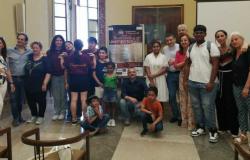TUSCANY – Of the 273 municipalities in Tuscany, 185 will vote next 8 and 9 June, at the same time as the European elections (here is the specific information) which will instead take place everywhere.
Throughout Italy there are 3,698 municipal administrations called to renew their representatives – 223 over fifteen thousand inhabitants – and they will involve over 16 million 605 thousand voters.
An “election day” which this time falls on Saturday and Sunday, a novelty for the administrative bodies where the rule from last January also debuts, which allows the mayors of territories between five and fifteen thousand inhabitants (and no longer just for those with up to five thousand) to to run for a third possible mandate and which removes any limits in smaller municipalities.
In our territory there is a double vote (more European administrative ones) in eight municipalities: Bagno a Ripoli, Barberino Tavarnelle, Greve in Chianti And San Casciano in Florentine; Castellina, Gaiole, Radda in Chianti And Castelnuovo Berardenga in the Sienese area.
Chianti and the Florentine hills to vote on 8 and 9 June: four municipalities, 13 mayoral candidates, here is the “starting grid”
Chianti Siena, here’s who will compete at the polls: in Radda only one candidate for mayor, in Castelnuovo four
Overall (click here for the complete list) there are twenty-six municipalities where people will vote for the administrative elections in the province of Arezzo, thirty-five in the metropolitan city of Florence, fourteen in the province of Grosseto, twelve in the Livorno area, nineteen in the province of Lucca, eight in the province of Massa Carrara, twenty-six in the province of Pisa, eleven in the Pistoia area, five in the province of Prato and twenty-nine in the Siena area.
In Tuscany, of the 185 municipalities called to vote to elect mayors and municipal councils (more than one million and 385 thousand voters potentially involved out of two million and 271 thousand residents), 34 municipalities have more than fifteen thousand inhabitants.
In those territories, if no candidate or coalition wins the absolute majority of votes in the polls, voting will also take place on 23 and 24 June (a Sunday and a Monday) for the run-off between the two candidates who have been most successful.
Among the thirty-four administrations with more than fifteen thousand inhabitants called to vote there are also three capitals: Florence, Prato and Livorno, the three largest cities in Tuscany.
Eighty-six municipalities have less than five thousand inhabitants and 65 between five and fifteen thousand. Voting takes place in all ten provinces.
The 34 municipalities with over 15 thousand inhabitants, in addition to the three capitals, are: Cortona and San Giovanni Valdarno in the province of Arezzo; Bath in RipoliBorgo San Lorenzo, Calenzano, Castelfiorentino, Certaldo, Empoli, Figline and Incisa Valdarno, Fucecchio, Lastra a Signa, Pontassieve, San Casciano, Scandicci and Signa in the Florentine metropolitan city; Follonica in the province of Grosseto; Cecina, Collesalvetti, Piombino and Rosignano Marittimo in the Livorno area; Capannori in the province of Lucca; Ponsacco, Pontedera, San Giuliano Terme and San Miniato in the Pisan area; Montemurlo in the province of Prato; Agliana, Monsummano Terme, Montecatini Terme in the Pistoia area and Colle di Val D’Elsa and Poggibonsi in the Siena area.
Opening of polling stations and voting methods
On 8 June polling stations will be open throughout Italy from 3pm to 11pm and on Sunday 9 June from 7am to 11pm.
Administrative: above 15 thousand inhabitants, vote and preferences
Let’s vote on a single cardwhich will already contain the names of the candidates for the office of mayor and, under each of them, the symbol or symbols of the lists that support him.
Three it’s possibility of vote:
1) It can be traced a mark only on a list symbolthus assigning one’s preference to the marked list and to the mayoral candidate supported by the latter.
2) It can be tracked a mark on a list symbol, simultaneously tracing a sign on the name of a mayoral candidate not connected to the voted list: by doing so you obtain the so-called “disjoint vote”.
3) It can be tracked a sign only on the name of the mayoral candidatethus voting only for the mayoral candidate and not for the list or lists connected to the latter.
Each voter can also express, in the appropriate lines next to the list symbol, one or two preferential voteswriting the surname of no more than two candidates included in the list he voted for.
If two preferences are expressed, they must concern candidates of different sexes from the same list, under penalty of cancellation of the second preference.
He is elected sindigo in the first round the candidate who obtains the absolute majority of valid votes (at least the 50% plus one).
If no candidate reaches this threshold we will go back to voting Sunday 23 June – from 7am to 11pm – e Monday 24th – from 7am to 3pm to choose between the two candidates who obtained the highest number of votes in the first round (ballot).
To the second round the candidate who obtains the is elected mayor highest number of votes.
Administrative: under 15 thousand inhabitants, vote and preferences
We vote with a single card to elect both the mayor and the city councilors. The name of the mayoral candidate is already printed on the ballot, with the mark of the only list that supports him next to it.
The vote is cast by making a mark on the list mark or on the name of the candidate for mayor.
It is not possible to vote for a candidate for the office of mayor other than the one linked to the list. The votes obtained by the candidate for the office of mayor are attributed to the list connected to him.
For the municipalities of less than 5,000 inhabitants can be expressed preference for a candidate for the city councilwriting the surname in the appropriate line next to the list symbol.
For the municipalities between 5,000 and 15,000they can be expressed one or two preferences for city council candidates.
If there are two, they must concern candidates of different sexes from the same list, under penalty of cancellation of the second preference.
He is elected sindigo the candidate who obtains the highest number of votes.
In case of equality of votes between two candidates we will go back to voting for the latter Sunday 23 June – from 7am to 11pm – e Monday 24th – from 7am to 3pm (ballot). Also in this case, whoever obtains the most votes of the two will be elected. In the event of a further tie, the eldest is declared elected.
Once elected the mayor is also defined as the advise: 2/3 of the available seats will go to the list that supports the elected mayor, while the remaining seats will be distributed proportionally among the other lists.
to know more
The Tuscan municipalities to vote on 8 and 9 June, political map of the outgoing administrations (Click hereedited by the Electoral Observatory of the Tuscany Region)
The European vote in Tuscany in 2019 (Click hereedited by the Electoral Observatory of the Tuscany Region)
All elections from 1946 to today (Click hereMinistry of the Interior database)
Other publications of the Regional Electoral Observatory (Click here)
©ALL RIGHTS RESERVED







